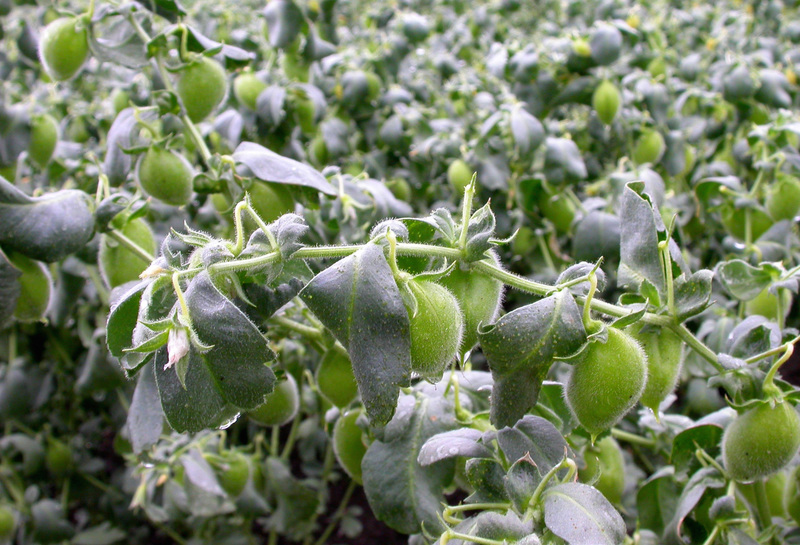Growing chickpeas (garbanzo beans) is similar to growing other beans. They thrive in warm, dry areas with less than 30 inches of rainfall a year. Because it’s not easy to transplant chickpeas, plant them directly in the soil. What’s more, they are low maintenance and fix much of their own soil fertility.
Chickpeas are divided into two main varieties:
Desi type – Have smaller dark and odd shaped seed. They are more drought tolerant and therefore, adapted to low rainfall areas. Kabuli type – These are the most common in Zambia. The seeds are cream coloured. They are later maturing and like higher-rainfall areas. Kabuli plants grow taller while Desi types are shorter. You can purchase seeds from seed merchants.
Planting Chickpeas
Chickpeas require well-draining soil to prevent seeds from rotting as well as fungal disease. If you have clay soil, add some sand to it to improve drainage. Beans provide their own nitrogen to the soil, thus, do well without fertilizer if planted in fertile soil. However, they can benefit from a feeding or two of compost or organic fertilizer.
Chickpeas don’t tolerate water-logging. However, they do well where the rainfall is high during the early growth stages and pod filling.
Chickpeas do not transplant well and are therefore best planted directly into the soil. You need to plant high-quality seed if you want to ensure robust seedlings and good crop establishment. If planting in rows, allow enough space between rows for weeding and harvesting.
Plant your peas in the ground 8 to 10 cm apart and about 5 to 7 cm deep into good moisture. The reason for planting this deep is to not only improve nodulation and promote the early formation of lateral roots but to also reduce the risk of damage from residual herbicides.

Caring for your peas
Add mulch once seedlings emerge to trap moisture. Be mindful of watering the leaves when using a hose because this can lead to fungal diseases. Thin the beans when they are a few cm tall especially if you planted them too close together. Weed and providing additional water during periods of low rainfall.
Pests and Diseases
Aphids, cutworms, chickpea leaf miners, grasshoppers and army worms are the insects that attack chickpeas. Try to apply organic pesticides and neem oil to deter them. To avoid root and stem rot, don’t water your peas overhead as well as over watering. You can avoid diseases that cause root rot by treating the seed with a fungicide before planting. Also, immediately spray Insect pests such as bollworm that appear during pod setting and filling.
You might also like: Know Your Enemy: Common Pests And Remedies – Leaf Miner
Harvesting
Chickpeas are ready for harvest when the pods turn brown. This is about 100 days after planting. At this point, you can hear a rattling sound from the dried beans within the pod. It’s important to note that rainfall during harvesting causes yield loss. The grain moisture has to be 13 % to minimise cracking and yield loss.
How to calculate expected yield
Average yields are 1 200-2000 kg/ha. To estimate yield, calculate as below:
[number of plants/m2 x pods/plant x seeds/pod x seed mass (g)] /100
Happy planting!

Please can you tell me where you can buy chickpea seed
Ann Street
These are not easy to find as seeds because most farmers plant from previous harvests. Please check with your local seed supplier.
What are the local names for Chick Peas?
Ba Chisala, Katwishi
Where can I buy chick peas seeds.